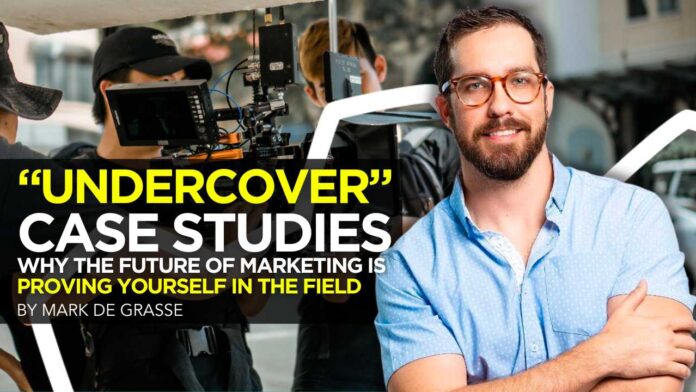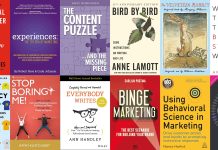If generative AI is the future of marketing (and media in general), how can you compete with other marketers if ALL OF US have access to the same tools?
We can all create amazing images, videos (soon), and articles. We can all use the most amazing copywriter as a template to write our own copy. We can even develop entire marketing plans in SECONDS.
We can also research almost any topic to justify the claims that we make for the products and services we’re trying sell… in almost no time.
Basically, pretty soon we’ll all be able to build anything we want to help our clients sell whatever they want with little effort… but is it a good thing?
It means UNLIMITED competition which may be a problem, but more importantly, it means that all businesses will soon lose the competitive advantage known as “professionalism.”
Why “Professional” Marketing Assets Aren’t Special Anymore
Back in the good ol’ days of digital marketing, if you could produce professional copy and visuals, you would be ahead of 90% of your competitors.
Writing consistent copy WAS hard.
Generating professional graphics WAS hard.
Producing professional pictures and videos WAS hard.
Now, professional marketing assets aren’t just widespread and more available than ever before, they’re LESS effective than user generated content (UGC) in most cases!
According to a Nielsen study, 92% of consumers trust organic, user-generated content more than they trust traditional advertising.
Why is UGC content more effective than professionally created content? It feels genuine and trustworthy.
Even if UGC content is made for personal gain (e.g. influencers, sponsored individuals, affiliates, etc.), it doesn’t matter to the viewer. They just see amateur content made about a product or service they might be interested in. They’ll trust that much faster than the fanciest commercial you can make.
UGC materials don’t need to PROVE anything, we as marketers do.
How Can Professional Content Keep Up with UGC?
So, what can marketers do to influence viewers the same way unpaid (or low paid) amateurs do with UGC?
The answer isn’t simple, but it is necessary.
If we need to produce professional content AND it needs to be compelling, we’re going to have to start proving ourselves in real world situations.

Want to get certified in Content Marketing?
We all sell high quality, well-vetted products and services (of course), but a list of features, benefits, and even testimonials isn’t going to be compelling enough any more. People want proof, and there’s something we can do to directly provide it.
How Case Studies Can Deliver Results Like UGC
Case studies are the professional business/marketing equivalent to User Generated Content.
Here’s what makes UGC effective:
- Authenticity: UGC is perceived as genuine, fostering trust and credibility.
- Relatability: Real user experiences make it easier for potential customers to envision product use.
- Social Proof: Positive interactions in UGC serve as powerful endorsements, boosting confidence.
- Diverse Perspectives: UGC provides varied viewpoints, appealing to a broader audience.
- Engagement: UGC generates higher engagement, fostering a sense of community around the brand.
- Cost-Effectiveness: Leveraging UGC is more budget-friendly compared to producing polished branded content.
- Scalability: UGC can be easily scaled, allowing for continuous and diverse content creation.
- Emotional Connection: UGC can evoke emotional responses, creating a stronger brand connection.
- Word of Mouth: UGC acts as digital word of mouth, amplifying the brand message organically.
- Adaptability: UGC can be adapted for various channels, maximizing its reach and impact.
Now, let’s look at what makes case studies compelling:
- Authenticity: Like UGC, case studies are authentic and based on real experiences, fostering trust.
- Relatability: Case studies provide real-world examples, making it easier for potential customers to relate.
- Social Proof: They serve as powerful social proof, showcasing successful experiences with the product or service.
- Diverse Perspectives: Case studies often include diverse perspectives, offering a well-rounded view of the product’s impact.
- Engagement: Well-crafted case studies can engage readers, drawing them into a narrative that highlights the value of the product or service.
- Cost-Effectiveness: While creating case studies involves some investment, they can be cost-effective compared to other forms of content creation.
- Scalability: Case studies, once created, can be shared across various platforms, maximizing their reach.
- Emotional Connection: Effective case studies can evoke emotions, creating a deeper connection with the audience.
- Word of Mouth: Positive case studies can be shared by customers, acting as digital word of mouth to amplify the brand’s success stories.
- Adaptability: Case studies can be adapted for different marketing channels, offering versatility in their use.
Even with all of these similarities, Case Studies can feel stuffy (especially when they’re related to services). There’s one type that can come closer to UGC, and that’s the “Undercover Case Study.”
What is an “Undercover Case Study?”
This type of “case study” has been done for years, and was popularized by the show “Undercover Boss” which started airing in 2010. If you didn’t know… this was marketing (and was probably paid for by the company being featured). Here’s a few entertaining moments if you haven’t seen the show before:
Yes, there are a ton of cringy moments when the “boss” proves to be incredibly incompetent while working simple jobs, but the desired effect was usually achieved: humanizing big companies and their owners/managers.
It also provides a ton of exposure for the brand, what they sell, and why you should shop there (even if the only reason to shop there is to help the poor souls that work there).
You might be saying, “I don’t have millions to spend on a production like this, what can I do?”
Good news! Marketers are stepping up to show how this type of case study can be done without a million-dollar budget.
Undercover Billionaire: A Step Closer to Practical Undercover Case Studies
“Undercover Billionaire” is this American TV show where super successful business folks get stripped of everything and get plopped into small towns armed with just $100 and a car. They’ve got a tight 90 days to spin that measly $100 into a cool million-dollar business, all from scratch.
The show kicked off on August 6, 2019, and wrapped up its first season on September 24, 2019, featuring bigwig Glenn Stearns. Season two stepped up the game with three entrepreneurs, including the likes of Grant Cardone. Here’s a peak at the content:
Folks love this show for throwing the American dream into the ring and seeing if it’ll come out on top. Can you really build a booming business with just pocket change? Sure, the show’s taken a hit for maybe being a bit too scripted or over the top, but it’s dishing out some serious lessons on hustling and business building.
Here’s the rundown: these high rollers pick a business, build a squad, hustle their way from that humble $100, and BOOM – a startup is born. Oh, and there’s a Discovery Channel film crew shadowing them, calling it a documentary on starting a small business from scratch. They want you to think, “Hey, if these guys can do it, so can I!”
Yeah, we get it – reality shows can be a bit Hollywood, maybe stretching the truth here and there. But, “Undercover Billionaire” serves up some real-deal insights into the wild world of entrepreneurship and the crazy hurdles of starting a business from ground zero.
It also shows whether the marketing techniques touted by people like Grant Cardone ACTUALLY work.
Again, you might be saying, “This is great, but I still don’t have a budget for something like this.”
In that case, good news! Someone is making a show that could prove the practicality of undercover case studies for the rest of us!
Undercover Agency: The Future of Marketing?
We know you can produce a compelling, interesting undercover case study if you have the money for a big show and the ability to get huge names on it, but what if you have a smaller budget and a smaller following?
Enter our DigitalMarketer friend and community members, JC & Karen Hite from Hite Digital.
They’re gearing up to embark on a daring mission: launch an agency from scratch and try to acheive $10k in profits within just 4 months. To up the stakes even higher, they’re moving to Searcy, Arkansas (from their home in Nicaragua) to do it.
They want to prove that their marketing techniques, for both starting an agency and gaining results for their small business clients, works. To do that, they’re following these specs:
- No team
- 4 months
- $2k starting funds
To add an extra layer of challenge, JC is throwing in a commitment to keep faith and family at the forefront. That means reading the entire Bible during this experiment and powering down the phone from 5pm-8pm for some quality family time!
If you’re an agency owner and want to join JC on this journey, they’ll be posting their progress starting in December 2023. To follow along, just join their Facebook Group.


![Like a brand, marketing attribution puzzle solved [Video]](https://blog.5gigbucks.com/wp-content/uploads/2025/03/Like-a-brand-marketing-attribution-puzzle-solved-Video-218x150.png)





